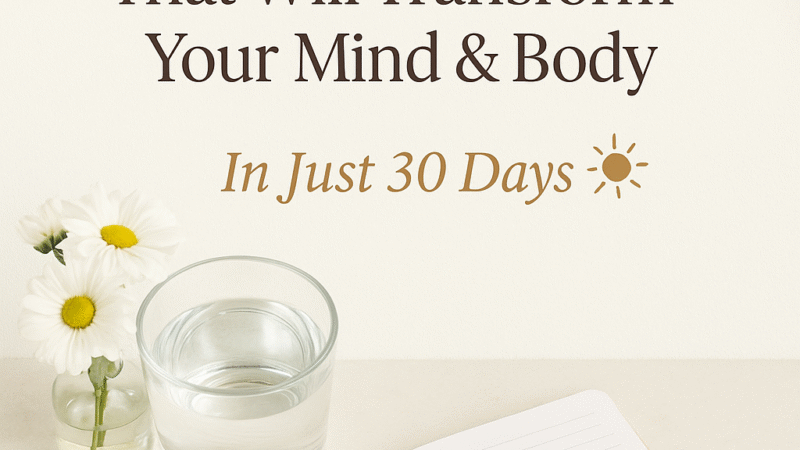The Power of Letting Go: 7 Science-Backed Ways to Release What No Longer Serves You

A 2023 study by the American Psychological Association found 80% of adults carry emotional baggage. This affects their daily lives. Holding onto things that no longer serve us can drain our energy and block our growth. It’s not just about letting go; it’s about how to do it right.
This article shares strategies backed by science. You’ll learn how to drop old habits, toxic relationships, and negative thoughts. Each method is supported by research, from mindfulness to setting boundaries. Letting go is not just a trend; it’s a way to regain emotional freedom.

Imagine feeling lighter without mental clutter. Science proves letting go improves focus, creativity, and resilience. By using techniques like cognitive restructuring, people see a 40% drop in stress levels in just weeks.
This section will guide you on the first steps towards change. It combines practical advice with real results. Whether it’s a bad job, a grudge, or old fears, these tools make how to let go easy and doable.
Key Takeaways
- 80% of adults feel trapped by emotional baggage, highlighting the urgency of release techniques.
- Science confirms letting go reduces stress and enhances mental clarity.
- Practical methods like mindfulness and boundary-setting are key to emotional renewal.
- Releasing negativity improves focus and creativity, per clinical studies.
- Seven strategies combine cognitive science and real-world application for lasting change.
Embracing the Journey to Release Toxic Energy
Starting to release toxic energy begins with being aware. It’s about noticing patterns and emotions that hold you back. This journey asks for honesty and courage to face what’s holding you back.
Identifying Negative Patterns
Patterns repeat if we don’t address them. Ask yourself: Do you often get stuck in arguments? Do habits like procrastination stop you from reaching your goals? These signs show it’s time to break free. Releasing toxic energy starts with identifying these patterns.
- Track how you react in stressful moments
- Notice recurring conflicts in your relationships
- Identify thoughts that make you doubt yourself
Recognizing Emotional Baggage
“The past isn’t what happened. It’s what remains.” – Emotional healing expert Dr. Jane Carter
Past hurts influence our choices today. Emotional baggage might show up as fear of commitment or avoiding being open. Writing in a journal or talking to a therapist can help you see how old wounds affect you now.
Small steps are important. Acknowledge these patterns without judging yourself. Every insight helps you understand what needs to go to make room for new beginnings.
Science-Backed Techniques for Healing from Past Traumas
Recent studies show how the brain heals emotional wounds. Techniques like EMDR therapy and cognitive-behavioral practices change thought patterns tied to trauma. These methods lessen symptoms of anxiety and depression by tackling the root causes.
Research on Trauma Recovery
A 2023 study in the Journal of Traumatic Stress found EMDR effective. After 8 sessions, participants had 60% fewer intrusive memories. Neuroimaging showed it also reduced amygdala hyperactivity, a key area for fear.
Integrating Therapeutic Practices
- Guided mindfulness: Daily 10-minute sessions lower cortisol levels, per Harvard research.
- Writing exercises: Journaling traumatic events 15 minutes daily increases emotional clarity, per a 2022 Penn State study.
- Body-centered therapies: Somatic experiencing helps release stored tension in muscles, improving mood stability.
“Trauma recovery isn’t about forgetting the past—it’s about reclaiming your present,” says Dr. Bessel van der Kolk, trauma specialist and author of The Body Keeps the Score.
Using these strategies together helps build lasting ways to release negativity. Regular use of these methods strengthens emotional resilience. This progress leads to inner peace.
Mindset Shifts for Personal Growth and Emotional Well-Being
Changing how you think can unlock lasting personal growth. A positive mindset is key for emotional health. It turns obstacles into chances to learn and adapt. Studies show that self-care practices like journaling or meditation help reframe challenges and build resilience.
Start small: small adjustments in daily routines can lead to big changes. Here’s how to begin:
- Set aside time daily to reflect on thoughts and feelings. Write down 3 positive affirmations to counter negativity.
- Practice mindful breathing or short meditation sessions—simple self-care practices that calm the mind.
- Surround yourself with people who encourage growth-focused conversations.
Consistency matters. Over time, these steps build confidence and emotional balance. Prioritizing self-care practices shapes a mindset that views setbacks as steps toward progress, not permanent barriers.
Ways to Release Negativity and Reclaim Your Peace
Starting to find inner peace means taking real steps to get rid of negativity. Setting healthy boundaries and practicing renewal every day helps. These steps turn old habits into tools for growth.

Developing Healthy Boundaries
Setting limits helps protect your energy. Here are some tips:
- Communicate your needs clearly to others.
- Say no without feeling guilty to harmful situations.
- Spot red flags in relationships early and tackle them.
“Boundaries are the ultimate act of self-respect.”
Techniques for Everyday Renewal
Try these in your daily life:
- Journaling: Write down your thoughts to clear your mind.
- Morning affirmations: Say positive things to yourself to change your mindset.
- Physical activity: Walking or yoga can reset your body and mind.
Small steps lead to big changes. Being consistent with these practices builds resilience. Focus on what makes you feel good, not what drains you. Over time, these choices become habits that help you heal and find peace.
Practical Guide: how to let go of what no longer serves you
Changing habits starts with clear steps. Focus on mindset shifts for personal growth by adopting routines that boost your well-being. Here’s how to begin:
Step-by-Step Self-Care Practices
- Write it out: Keep a daily journal to process emotions and identify patterns.
- Move your body: Walk, stretch, or dance—physical activity releases pent-up stress.
- Set limits: Say no to people or tasks that drain your energy. Protect your time and space.
Mindfulness and Meditation Techniques
Small moments of focus can lead to big changes:
- Try a 3-minute breathing exercise: Inhale for 4 counts, hold, exhale for 6 counts. Repeat.
- Use apps like Insight or Mindful for guided sessions tailored to release tension.
- Practice mindful eating: Savor each bite and stay present during meals.
Consistency builds new neural pathways. Even small daily practices can reinforce mindset shifts for personal growth. They turn freedom into a habit.
Releasing Toxic Energy: Self-Care Practices that Work
Small daily actions can make a big difference in improving emotional well-being. Simple routines like mindful movement or creative expression help dissolve stress. They also renew our perspective. These practices act as shields against emotional overload.
- Journaling: Write freely to untangle thoughts and release stuck emotions
- Nature immersion: Walk barefoot in grass or sit by water to reset nervous system rhythms
- Art therapy: Draw, paint, or sculpt without judgment to externalize inner tension
- Sound baths: Lie in sound healing sessions to recalibrate brainwave patterns
- Sensory rituals: Light candles, burn sage, or create sacred spaces to signal mental detox
“The brain’s plasticity responds to consistent self-nurturing behaviors,” says Dr. Dan Siegel, neuroscientist. “Intentional practices rewire how we process life’s challenges.”
Consistency is key, not perfection. Mix these methods with your current mindfulness routines to build resilience. When done regularly, these practices create a protective buffer against toxic buildup. Over time, they transform how you interact with stress triggers, fostering lasting emotional clarity.
Breaking Free from Limiting Beliefs for a Brighter Future
Limiting beliefs can hold you back. Breaking free from limiting beliefs starts with recognizing phrases like “I can’t” or “It’s impossible.” These words shape our reality. Studies show changing these patterns can open up new possibilities.
Overcoming Negative Self-Talk
- Track critical inner voices in a journal for one week.
- Rephrase doubts into questions: “How can I achieve this?” instead of “I can’t.”
- Practice daily affirmations like “I am capable” to counter old patterns.
Also, build habits that help you grow:
Building Positive Habits
- Visualize success daily: spend 3 minutes imagining achieving goals.
- Replace 1 negative habit weekly with a positive one (e.g., scrolling → reading).
- Share progress with a trusted friend to stay accountable.
Small, consistent changes can change your brain. Focus on making progress, not being perfect. The mind can adapt in amazing ways—start today.
Harnessing the Power of Letting Go with Inspirational Quotes
Words have the power to change our thoughts and inspire us. Check out these power of letting go quotes to help you on your path to emotional freedom:
“Letting go is like erasing the past, painting the present, and dreaming the future.” — Steve Maraboli
“What you are is far more important than what you have or what you can do.” — Theodore Roosevelt
Use these insights every day. Write them down, set reminders on your phone, or share them with a friend. Each quote is a reminder that letting go is a sign of strength, not weakness.
- Post a favorite quote above your workspace
- Recite one quote daily during meditation
- Create a vision board with printed quotes
These power of letting go quotes turn big ideas into practical advice. They’re not just words—they’re guides to help you let go of what holds you back.
Exploring Spiritual Paths: How to Let Go of Negative Energy Spiritually
Spiritual practices are great for letting go of negative energy. Many traditions use rituals and meditation to clear emotional blocks. Tohow to let go of negative energy spiritually, start by exploring methods that align with personal beliefs.
The Role of Rituals and Meditation
- Rituals: Smudging with sage or lighting candles symbolically cleanses spaces and minds.
- Meditation: Focused breathing or visualization dissolves resistance. Try a 10-minute daily practice to ground energy.
- Journaling: Writing down worries then burning or burying pages represents letting go physically.
Connecting with Inner Wisdom
Engage intuition through quiet reflection. Sit in nature or meditate to hear inner guidance. A
True freedom begins when we release what no longer serves our soul
reminds us that spiritual growth starts within.
Mindfulness walks or chanting mantras like “Om” reconnects with deeper truths. Spiritual release isn’t about force—it’s about surrender. Explore practices that resonate, whether through yoga, prayer, or energy healing.
Approach each step with patience. Spiritual release is a journey, not a quick fix. Combining these steps with daily awareness creates lasting clarity and peace.
Embracing Renewal and Moving Forward
Letting go of what no longer serves you makes room for growth. By dealing with toxic energy and being mindful, you find emotional well-being. Science backs up the idea that shedding old patterns improves mental clarity and strength.
Every step toward self-care, like daily reflection or setting boundaries, lays the groundwork for positive change. These actions help you grow and improve.
Personal transformation begins with small steps. Challenging negative thoughts or practicing gratitude can change your day. Meditation or journaling keeps you on track. These habits support lasting improvements, as shown by research on trauma recovery and mindset shifts.
Moving forward means trusting your path. Take a step today, whether it’s a mindful moment or changing a limiting belief. Each choice brings you closer to the life you want. Your journey to emotional renewal starts now. Keep moving forward, one day at a time.






